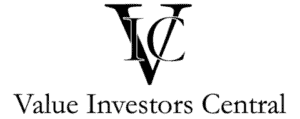The price-to-earnings ratio (PE ratio) measures a company’s value in relation to how much money it generates in earnings. The PE ratio can help you understand how expensive or cheap the stock is. However, the ratio comes with many pitfalls.
| PROS | CONS |
| It can be used to compare against other stocks | Only reflects historical earnings |
| It is widely used | It can be manipulated |
| It is a benchmark for determining value | Does not include company debt |
| It can be used to make a quick decision | It can not be used to determine company losses |
| Easy to calculate | Subjective in nature |
| It can be used to determine growth potential | It has to be viewed in context |
| It can be used to determine the price of a stock | It is affected by different accounting methods |
PROS
It can be used to compare against other stocks
The PE ratio is an excellent tool for comparing the value of stocks against each other. For example, if your goal is to buy a bank stock and you are deciding between Wells Fargo and Bank of America, you may choose the stock with the lower PE ratio. Both banks are great companies and have very similar business models, but if you can purchase one cheaper than the other, it makes sense to do so.
It is widely used
The PE ratio is the most referred to valuation metric in finance. It has become the industry standard for almost every publicly traded stock worldwide. Because of this, investors can look up any public company’s PE ratio.
It is a benchmark for determining value
The PE ratio is a great way to determine a stock’s value against the whole index. For example, the average PE ratio for the S&P 500 over the last 90 years was roughly 15, and today it is at a PE ratio of 20. If a stock’s PE ratio is 15, it may be considered undervalued today but fairly valued compared to the historical average.
It can be used to make a quick decision
Investors whose whole lives are spent looking for undervalued opportunities to buy need a quick way to filter vast amounts of stocks. The PE ratio is a great way to filter out anything that is considered overvalued and to create a shortlist of potentially undervalued stocks. A stock filter is a great tool to do this in minutes.
Easy to calculate
If a company’s stock price and earnings per share are known, then the PE ratio can be easily calculated. It provides a very accessible way to value a stock quickly.
It can be used to determine growth potential
A common method of buying stocks for value investors is to look for stocks of great companies with low PE ratios. Sometimes, a low PE ratio can mean the stock is undiscovered by the market. It is often only a matter of time before other investors find the undervalued opportunity. This discovery leads to price appreciation. On the other hand, stocks with very high PE ratios often have low returns.
It can be used to determine the price of a stock
The PE ratio is the best quick method for determining the value you are receiving in return price that you are paying. The goal is to buy a bargain to have a higher likelihood of greater returns. Overpaying reduces this likelihood.
CONS
Only reflects historical earnings
The PE ratio is calculated using the earnings per share, which is a historical figure, either from the last quarter or last year. The PE ratio does not reflect the value of a business today, nor does it make any predictions.
It can be manipulated
The biggest drawback to the PE ratio is that it can be manipulated and should not be taken at face value. For example, a company could sell assets and record them as revenue, artificially inflating their earnings.
Does not include company debt
A company can have a low PE ratio making it look attractive on the surface. However, the PE ratio does include any information about its balance sheet. The company could have large amounts of debt and be on the verge of bankruptcy.
It cannot be used to determine company losses
If a company loses money, it has no earnings, so its PE ratio can not be determined. The classic example is Tesla; in the early years, Tesla made no money but continually expanded its operations, and demand kept increasing.
It is subjective in nature
What may be a bargain price for one investor may be overpriced for another. Investing is as much of an art form as it is a science. Purchasing a stock requires predicting how management will perform, where earnings will go, and the strength of the competition.
It has to be viewed in context
The PE ratio has to be viewed in terms of the historical PE ratio of that company, the PE ratio of its industry, and the PE ratio of the market as a whole. For example, it is not fair to compare the PE ratio of a railroad stock to a technology stock. Each company must be looked at in its context.
It is affected by different accounting methods
Different accounting methods can affect a company’s PE ratio. For example, a company may choose a Last In, First Out (LIFO) accounting method that records the most recently produced items as sold first, compared to a First In, First Out (FIFO) method. During times of rising costs, the most recently made items cost more; therefore, LIFO leads to lower earnings. Furthermore, expenditure on R&D is instantly expensed, which can cause the appearance of low earnings. Expenditure on R&D is technically an investment that will be realized over many years. For example, Amazon’s PE ratio has historically been very high because it reinvests all of its earnings into R&D.

